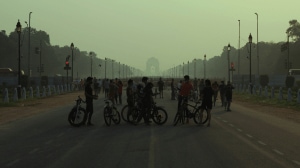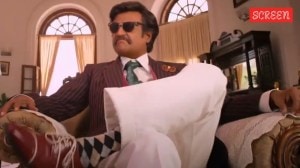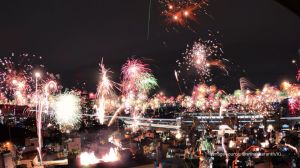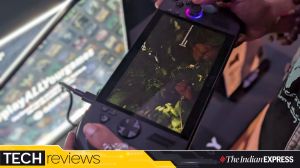US awakens to Pak’s missile proliferation
WASHINGTON, JULY 10: India's interception of a North Korean ship carrying missile parts and blue prints to Pakistan appears to have reope...

WASHINGTON, JULY 10: India’s interception of a North Korean ship carrying missile parts and blue prints to Pakistan appears to have reopened a pandora’s box and shown up conclusive proof of what the United States has been selectively fretting about in recent times: proliferation of advanced ballistic technology and weapons between rogue and militaristic regimes.North Korea and Pakistan have long been prime suspects in the proliferation game, but Washington, rather than confront Pyong Yong, has been trying to buy out its advanced missile and nuclear program with food and aid. But the totalitarian regime itself has been having its food and selling its missiles too. In Pakistan’s case, Washington has been winking at its acquisitions. But it now turns out that the Clinton administration can’t help being concerned about the developments, particularly the possibility of Pakistan exporting its nuclear and ballistic advances, a move advocated recently by some of its more zealous leaders like former ISI chief HamidGul.
Alarm bells rang in Washington two months ago following a visit by Saudi Arabia’s Defense Minister, Prince Sultan bin Abdelaziz al-Saud, to the Pakistani nuclear and missile facilities near Islamabad. According to US accounts, the Prince, accompanied by Prime Minister Nawaz Sharif and Dr A.Q.Khan, visited two plants, one for Uranium enrichment in Kahuta and one for the manufacture of Ghauri missiles. It was the first time that an outsider had visited the top-secret sites, the New York Times reported on Saturday.
Although the Americans have enlisted Saudi support to temper the mood in Pakistan for the Kargil withdrawal proposal, as reported in this paper, Washington is clearly uneasy about the Pak-Saudi military nexus.
The Times quoted a senior administration official as saying the visit to the top secret sites by the Prince was considered in Washington as "definitely eyebrow-arching." Adding to the Administration’s fears was a lack of clarity by Saudi Arabia when Washington asked why the ministerhad visited the plants, officials said.
The development was considered grave enough by the administration for President Clinton to raise the proliferation issue when he met Nawaz Sharif and warn Pakistan about such sales.
Some US officials, however, glossed over the Pak-Saudi proliferation nexus, saying Prince Sultan was most interested in acquiring missiles, not nuclear weapons technology.
A Senior Administration official said Washington had received "assurances from Saudi officials that they are not seeking weapons of mass destruction," or nuclear weapons, the Times reported.
Other analysts were less charitable. "The clear inference is that he (Prince Sultan) is interested in the material at the sites he visited," Michael Krepon of the think tank Stimson Center was quoted as telling the paperClinton administration officials have been equally blase about North Korea’s sale of ballistic missile technology to Pakistan.
According to informed accounts in non-proliferation circles, North Korea hasbeen selling Pakistan weapons and blue prints for hard cash and food, following a deal struck during then Prime Minister Benazir Bhutto 1993 visit to that country.
Analysts both in the west and in India say Pakistan’s Ghauri missile is a thinly disguised version of the North Korean No-Dong medium range missile.According to intelligence sources, North Korea has a long and sustained history of ballistic missile development going back to the 1960s and linked to its own geostrategic perceptions vis-a-vis South Korea, Japan and the United States.
The principle design outfit in North Korea is called the January 18th Machine Factory located in Kagamari in the southern province of Pyonghahn. This underground facility, which employs up to 10,000 people, has mastered missile technology by reverse engineering many Russian and Chinese missiles.The missiles are then manufactured at specific missile factories like the 125 Factory, also known as the Pyongyong Pig Factory, the Number 26 Factory, and the 118 Factory.Military delegations from buyer countries like Egypt, Iran and Pakistan are believed to have visited the rocket assembly lines in these factories.
The technology transactions are believed to have been routed through companies like the Yongak-san Trading Company and the Changkwang Trading Company under the 2nd Economic Committee, the 15th Bureau (the General Bureau of Technology) in the Armed Forces Ministry.
US proliferation experts like Gary Milholin say Islamabad has been carrying on a cloak-and-dagger operation is procuring the missile technology while successfully covering its tracks. According to North Korean officials who defected from the Communist regime and testified before the US Congress last year, Pyong Yong earned about $ 1 billion a year from missile exports, a significant sum for an impoverished country whose total GNP is estimated at only $ 22 billion. Young-hwan Ko, a senior official who defected, told US law-makers that North Korea considered exporting missiles crucial to its economy.
Top






- 01
- 02
- 03
- 04
- 05

























